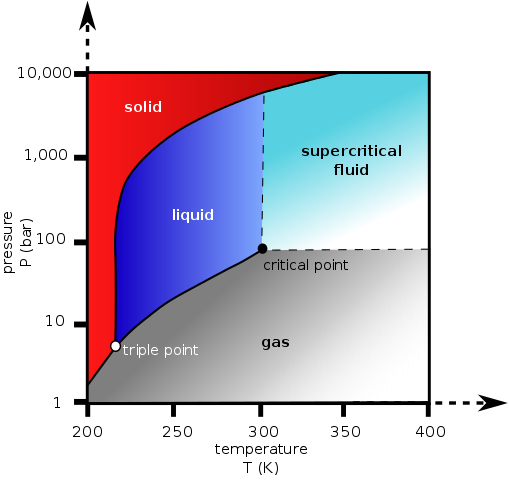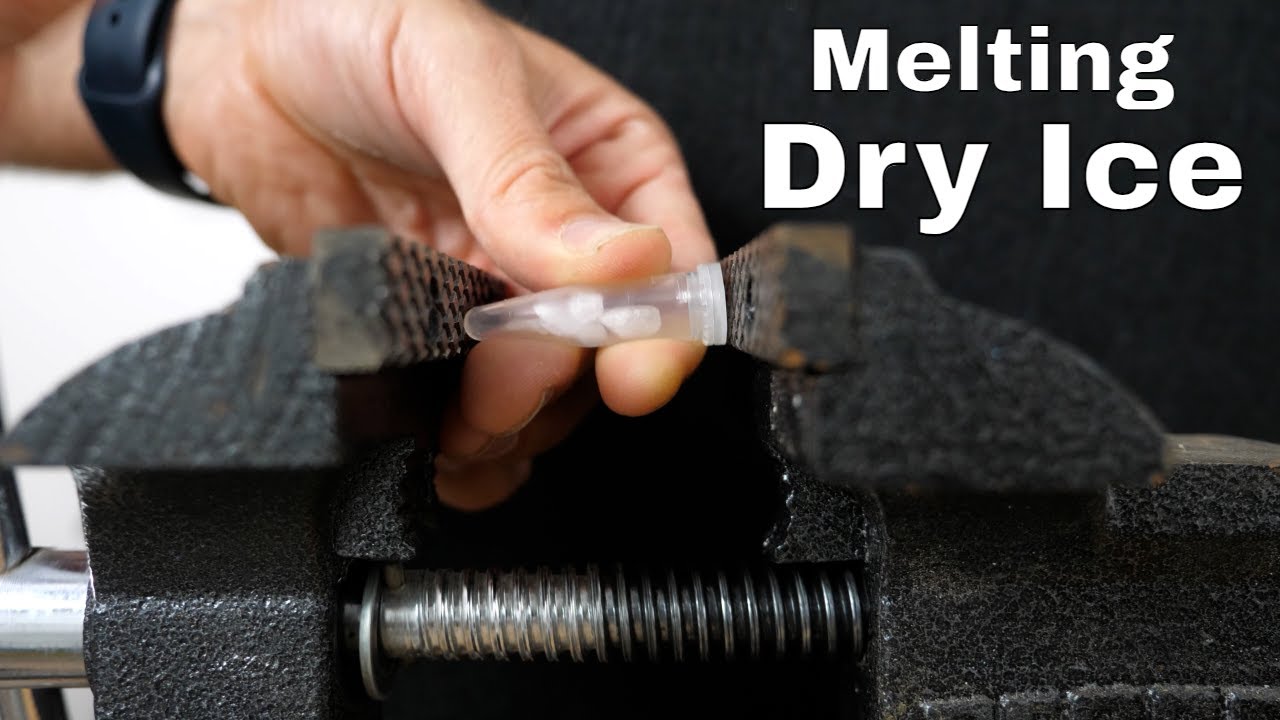Dry ice (carbon dioxide [CO₂] frozen at a temperature of −78.5° C or below at atmospheric pressure) is “dry” because, unlike water, at or below atmospheric pressure it sublimates—passes directly from the solid to gaseous phase. This is illustrated by the phase diagram for CO₂.

Only at pressures greater than 5.1 atmospheres (500 kPa or 75 psi) does carbon dioxide have a liquid phase between the solid and gaseous. But that’s not such a high pressure: most home shop air compressors or humble manual tire pumps can easily achieve it. Or, how about a vise?
6 Likes
In the U.S.A., the FAA limits packages to 5.5 lbs of dry ice. Each airline has its own policy, so check with your airline before your flight. In November of 2020 during peak Covid panic, I transported approximately 40-lbs of venison that stayed frozen for over 20 hours from New York to Texas.
Strangely, FAA still does not allow carrying on a 12 oz bottle of water …
-----------------------Source: Faa.gov —2023 Oct 24------------------------------------------------------
PackSafe - Dry Ice
Carbon dioxide, solid, 2.5 kg (5.5 lbs) or less, when used to pack perishables
Quantity limit: 2.5 kg (5.5 lbs) per package and per passenger.
Airline approval is required.
Packages must NOT be air tight and must allow the release of carbon dioxide gas.
When in checked baggage, the package must be marked “Dry ice” or “Carbon dioxide, solid” and marked with the net quantity of dry ice, or an indication that it is 2.5 kg (5.5 lbs) or less.
See the regulation: 49 CFR 175.10(a)(10)
3 Likes

